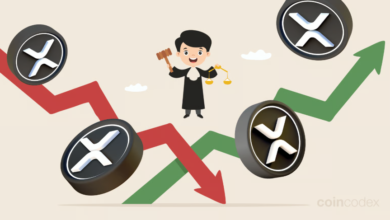
Creating a Customer Journey Map to Understand Buyer Behavior
Understanding buyer behavior is the cornerstone of effective marketing, and a customer journey map serves as a vital tool to achieve this insight. By visualizing the path customers take—from their first encounter with a brand to post-purchase engagement—a journey map illuminates their motivations, challenges, and decision-making processes. Whether targeting B2B decision-makers or B2C shoppers, a well-crafted map reveals the nuances of buyer behavior, enabling businesses to tailor strategies that resonate and drive results. This article outlines how to create a customer journey map, emphasizing practical steps to uncover behavioral insights and enhance customer experiences.
Setting the Stage with Clear Goals
The first step in building a customer journey map is to define its purpose, as this shapes the focus and depth of the analysis. The goal might be to understand why customers abandon purchases, identify barriers in the decision-making process, or uncover opportunities to build loyalty. For instance, a B2B SaaS provider might aim to pinpoint why prospects drop off during the evaluation phase, while a retail brand could seek to understand what drives repeat purchases.
Clarifying the target audience is equally critical. Are you mapping the journey for small business owners, corporate executives, or individual consumers? Narrowing the focus ensures the map captures specific behaviors relevant to the audience. For example, a B2C brand might focus on eco-conscious millennials, while a B2B vendor targets IT managers prioritizing scalability.
Involving cross-functional teams—marketing, sales, and customer support—early in the process ensures a holistic perspective. A workshop where teams share insights about customer interactions can align everyone on objectives and highlight key behaviors to explore. This clarity sets the foundation for a map that delivers actionable insights into buyer motivations.
See also: What Makes Listing 3274107752 Stand Out
Collecting Data to Uncover Behavioral Patterns
A customer journey map is only as effective as the data it’s built on. To understand buyer behavior, businesses must gather both quantitative and qualitative data to reveal what customers do and why they do it.
Quantitative data provides a foundation. Analytics tools like Google Analytics or CRM platforms can track metrics such as website visits, time spent on pages, or email click-through rates. For example, a B2B software company might notice that prospects spend significant time on pricing pages but rarely request demos, suggesting hesitation around cost. In B2C, a retailer might see high cart abandonment rates, indicating a behavioral barrier at checkout.
Qualitative data adds context to these patterns. Customer interviews, surveys, or focus groups can uncover emotions, motivations, and frustrations. For instance, a B2B buyer might reveal that they need more technical details before committing, while a B2C shopper might express distrust in unclear shipping policies. Social listening tools can further capture sentiment on platforms like Twitter or LinkedIn, revealing how buyers discuss the brand or industry.
By synthesizing these insights, businesses can identify behavioral trends. A B2B vendor might learn that buyers prioritize peer reviews, while a B2C brand discovers that customers respond to personalized offers. These findings shape the map, ensuring it reflects real-world behaviors.
Charting Touchpoints Across the Journey
Mapping touchpoints—every interaction a customer has with the brand—is essential to understanding their behavior. These touchpoints span multiple channels, including websites, social media, emails, sales calls, or in-store visits, and occur across key journey stages: awareness, consideration, purchase, and retention.
In the awareness stage, buyers encounter the brand through touchpoints like search ads, social media posts, or industry blogs. A B2B decision-maker might find a vendor through a LinkedIn article on supply chain optimization, while a B2C shopper might see an Instagram ad for sustainable fashion. Understanding which touchpoints drive discovery reveals where buyers seek information.
During consideration, touchpoints like product demos, case studies, or reviews come into play. A B2B buyer might download a whitepaper, while a B2C customer reads reviews on a third-party site like Trustpilot. The purchase stage includes touchpoints like checkout pages or contract negotiations, while retention involves follow-up emails or loyalty program interactions.
To map these effectively, trace the customer’s path through each channel. For example, a B2B prospect might move from a Google search to a website form, then a sales call. In B2C, a shopper might start with a TikTok ad, visit the website, and complete a purchase via a mobile app. Documenting these touchpoints highlights where behaviors align or diverge, guiding optimization efforts.
Capturing Emotional Drivers and Barriers
Buyer behavior is shaped not just by actions but by emotions, which a customer journey map must capture to be effective. At each touchpoint, consider how customers feel—curious, confident, frustrated, or skeptical—and what drives those emotions.
For instance, during the awareness stage, a B2B buyer might feel intrigued by a thought leadership webinar but overwhelmed by technical jargon. In B2C, a shopper might feel excited about a product but anxious about unclear return policies during checkout. Customer feedback, gathered through surveys or interviews, can validate these emotional insights. A B2B client might express relief when a vendor offers a clear implementation plan, while a B2C customer might cite trust in a brand’s transparency as a purchase driver.
Identifying emotional barriers is equally important. A lengthy B2B sales process might frustrate decision-makers, while a B2C checkout with hidden fees could erode confidence. By mapping these emotions, businesses gain a deeper understanding of what motivates or deters buyers, enabling targeted improvements.
Visualizing the Map for Clarity
With data and touchpoints identified, the next step is to create a visual representation of the journey. The format can vary—a timeline for linear journeys, a storyboard for narrative depth, or a flowchart for complex B2B processes. The goal is to make the map clear and accessible to stakeholders.
Divide the map into journey stages, plotting touchpoints, channels, actions, emotions, and pain points. For example, a B2C retailer’s map might show the awareness stage with a social media ad, consideration with a product page visit, purchase with a checkout process, and retention with a loyalty email. Emotions might range from curiosity to satisfaction or frustration if a touchpoint underperforms.
Personas enhance the map’s specificity. A B2B map might reflect “Emma, the procurement manager,” who values detailed proposals, while a B2C map might focus on “Liam, the tech-savvy shopper,” who prioritizes fast delivery. Tools like Canva or Mural can create professional visuals, ensuring the map is a shared reference point for teams.
Analyzing Insights to Drive Action
The map’s true value lies in its ability to reveal actionable insights about buyer behavior. Analyze each touchpoint to identify patterns, such as high engagement with certain content or drop-offs at specific stages. For example, a B2B vendor might notice that prospects engage with case studies but rarely complete demo forms, suggesting a need for simpler scheduling.
Pain points often highlight behavioral barriers. A B2C retailer might find that customers abandon carts due to complex navigation, while a B2B client might hesitate if proposals lack clarity. Opportunities emerge from addressing these issues—streamlining a checkout process or offering tailored demos can boost conversions.
Prioritize actions based on impact. High-priority fixes, like improving website load times, might yield immediate results, while long-term initiatives, like developing new content, build loyalty over time. This analysis transforms the map into a strategic tool for aligning with buyer behavior.
Implementing and Measuring Changes
With insights identified, implement solutions to enhance the journey. Collaborate across teams to ensure changes are cohesive. For instance, marketing might create targeted content for the consideration stage, while sales refines demo processes based on map insights.
Measure the impact of these changes using key performance indicators (KPIs) like conversion rates, time to purchase, or customer satisfaction scores. A B2B vendor might track whether a simplified proposal process shortens sales cycles, while a B2C brand could measure reduced cart abandonment after optimizing checkout.
Testing is critical. A/B testing different touchpoints, such as two versions of a landing page, can reveal what resonates most. Customer feedback, gathered through post-interaction surveys, provides qualitative validation. Iterative improvements ensure the map remains aligned with evolving buyer behaviors.
Integrating Technology for Deeper Insights
Technology enhances the map’s ability to uncover and act on buyer behavior. CRM systems like Salesforce track interactions across touchpoints, providing a unified view of the journey. AI tools can analyze data to predict behaviors, such as identifying prospects likely to convert based on website activity.
For example, a B2B vendor might use AI to recommend content to prospects, like a whitepaper for those researching technical features. In B2C, a retailer could use a chatbot to guide shoppers through checkout, reducing abandonment. Marketing automation platforms streamline repetitive tasks, like sending personalized follow-ups, ensuring touchpoints are timely and relevant.
Integration is key. A cohesive tech stack ensures data flows seamlessly, enabling real-time adjustments. For instance, a B2C brand might use integrated analytics to track how social media ads drive website visits, refining campaigns accordingly.
Evolving the Map with Buyer Trends
Buyer behavior is dynamic, influenced by market trends, technological advancements, and cultural shifts. To remain relevant, the customer journey map must be updated regularly. Schedule reviews—quarterly or biannually—to incorporate new data, such as shifts in channel preferences or emerging pain points.
For example, a B2B vendor might notice increased demand for sustainability-focused solutions, prompting new content touchpoints. In B2C, a brand might adapt its map to reflect growing mobile app usage, emphasizing app-based touchpoints. Engaging customers directly through feedback or co-creation sessions ensures the map stays aligned with their evolving needs.
By treating the map as a living tool, businesses can continuously refine their understanding of buyer behavior. This adaptability ensures the map not only captures current behaviors but also anticipates future trends, driving sustained engagement and conversions in a competitive landscape.


